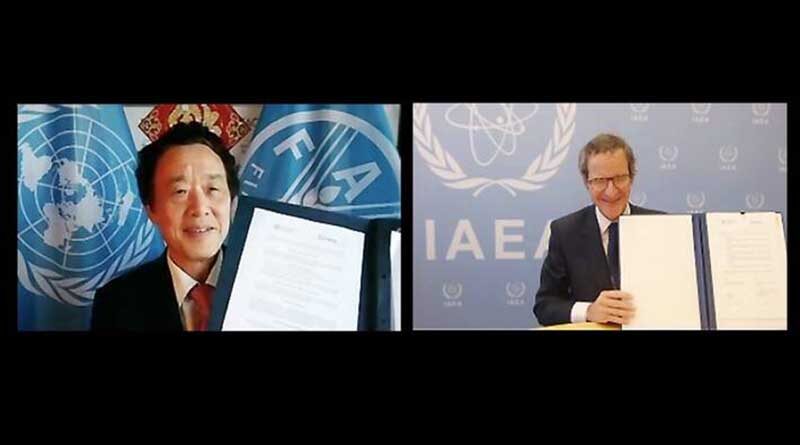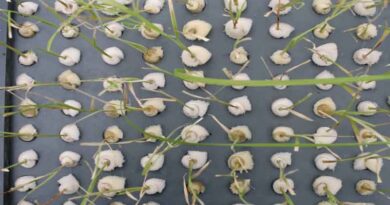FAO and IAEA deepen and broaden their collaboration
24 February 2021, Rome: The Director-Generals of the Food and Agriculture Organization (FAO), QU Dongyu, and the International Atomic Energy Agency (IAEA), Rafael Mariano Grossi, signed an updated collaboration arrangement, aimed at further strengthening and developing their joint activities.
The Joint FAO/IAEA Nuclear Technologies Division, operating since the 1960s, will become a Centre, and continue its well-recognized and respected work whilst increasing synergy and expanding areas of common interest, in particular in relation to transboundary animal and plant diseases.
“I look forward to even more concrete and impactful collaboration,” said the FAO Director-General at a joint event Tuesday, highlighting the potential contributions of innovative research and development activities, using nuclear techniques, to the transformation of agri-food systems.
The IAEA Director-General Grossi stated that the collaboration with FAO was not only exemplary, but also “changing, growing and adapting to the challenges.”
The two agencies, which together run a campus of innovative science and development laboratories in Seibersdorf, Austria, and have plans to expand the existing technical infrastructure to include fit-for-purpose greenhouses for climate-smart agriculture as well as a high-level biosecurity BSL3 laboratory to support animal and zoonotic disease control, have delivered numerous successful applications of nuclear technologies food and agriculture.
During the COVID-19 pandemic the Joint Centre has provided technical support and laboratory training by using real-time PCR testing kits with necessary reagents and other biosafety equipment as well as expert backstopping services to 128 countries.
The expanded collaboration framework agreed today will improve integration of the IAEA’s capacities into FAO’s work on OneHealth, while also contributing to IAEA’s new Zoonotic Disease Integrated Action (ZODIAC), which focuses on innovative R&D activities, surveillance and diagnostics through the use of nuclear techniques.
ZODIAC will be crucial in filling in knowledge gaps and the Joint Center’s laboratories present a unique added-value in that respect, FAO Director-General QU noted and added that it will also benefit from FAO’s worldwide network of veterinary laboratories operating at the field level.
Highlights of the FAO/IAEA collaboration
The Joint FAO/IAEA Center has vastly up scaled the use of the Sterile Insect Technique, which operates by releasing mass-produced sterile insects to control livestock and plant pests such as tsetse flies, screwworm, fruit flies and other pests. Globally more than one trillion sterile insects have been released to help control major agricultural pest problems that lead to fruit production, animal diseases, trade restrictions and biodiversity risks.
The nuclear application in food and agriculture uses isotopic techniques to guide soil and water management, and to develop diagnostic techniques to support Members in the early diagnosis and control of animal and zoonotic disease including African Swine Fever, Rabies and Food-and-Mouth Disease and contributed to the eradication of Rinderpest.
FAO and IAEA’s joint work has, through targeted plant breeding, also tackled livelihood-threatening crop diseases such as coffee rust, and the Centre is embarking on a series of projects focused on key tuber crops and olive trees.
Nuclear and isotopic techniques have also been used to increase food safety and quality including authenticity and traceability. These techniques can also be applied for tracing microplastics in the environment, as well as tracking migratory birds – a key data need to control Avian Influenza Viruses and related zoonoses.
Also Read: IT Grads building the future of Agriculture
The application of nuclear and nuclear-derived technologies in the food and agriculture sectors have positive socio-economic impacts frequently measured in billions of U.S. dollars annually.















